LASER Therapy (Light Amplification by Stimulated Emission of Radiation)
What is LASER Therapy?
Light Amplification by Stimulated Emission of Radiation(LASER)
LASER therapy is the use of low-intensity laser light to treat pain caused by soft tissue injury. It promotes tissue healing and regular cell activity.
LASER treatment treats musculoskeletal injuries, chronic and degenerative disorders, and wound healing by emitting monochromatic light from high-intensity super luminous LEDs. The amount of light is relatively low when compared to other types of laser therapy, such as those used to remove tumors and coagulate tissues.
Posten et al state that low-level LASER have the following properties:
- LASERS have a power output of 0.001 to 0.1 watts.
- Wavelength ranges from 300 to 10,600 nm.
- Pulse rate ranges from zero (continuous) to 5000 Hertz (cycles per second).
- Intensity of 0.01-10 W/cm2 and dosage of 0.01–100 J/cm2 5.
LASER in medicine allows surgeons to work with high accuracy by focusing on a tiny region and causing minimal damage to the surrounding tissue. LASER treatment may reduce discomfort, edema, and scarring compared to standard surgery. However, LASER therapy may be costly and require many treatments.
Properties of LASER:
Because of the special nature of how LASERS are created, they have specific qualities.
- Monochromaticity: refers to the hue or wavelength of light. Because LASER light is created from a single active medium, it has just one color and wavelength.
- Coherent and Parallel- LASER light has a similar wavelength and phase, resulting in coherent and parallel waves. Light travels in sine waves that are in phase with one another, with peaks and troughs perfectly coinciding and reinforcing each other, therefore LASER light travels as a parallel beam with very little spread.
History of LASER therapy:
Albert Einstein was the first to describe this technique, which later evolved into LASER therapy.
By the end of the 1960s, Endre Master had turned to LASER treatment to repair wounds.
The first low-level LASER was created in the early 1960s.
In February 2002, the microlight 830 [ML 830] got FDA clearance to treat carpal tunnel syndrome.
How does LASER therapy work?
When a cell works to heal itself, it requires a lot of energy. Most cells continue to function normally, which is why certain tissues take so long to mend. In other cases, the cells are so busy coping with inflammation and bi-products in the wounded tissue that they don’t have enough energy to perform adequate healing. LASERS stimulate and boost the activity of cells, allowing them to work better, quicker, and more efficiently.
As a result, wounds and injuries heal more quickly. A more extensive explanation of the science underlying laser treatment is that the LASER light pushes the cell’s mitochondria into hyperactivity. The Krebs Cycle of metabolism takes place on the inner membrane of this structure, releasing energy from the chemical bonds found in ATP (adenosine triphosphate) molecules. The cell now has more energy and is better able to contribute to the mending process.
When a light source is applied to the skin, it’s absorbed by the mitochondria and photons penetrate several cm. The energy drives numerous favorable physiological reactions, culminating in restoring normal cell form and function but at a faster rate. The high-power diode LASER, targeted at hemoglobin and cytochrome oxidase, may aid in breathing and, consequently, provide good therapeutic performance.
Classification of LASER:
According to the nature of the material put between two reflective surfaces.
According to intensity.
According to risks.
Based on the nature of the substance put between two reflecting surfaces.
Crystal LASER (solid-state lasers)
Ruby crystal (aluminum oxide + chromium)
Neodymium crystal is embedded in yttrium-aluminum garnet [Nd: YAG]. lasers
Gas LASER:
helium-neon
argon
carbon dioxide.
Semiconductor or diode LASER:
gallium arsenide (GaAs).
Liquid LASER:
Polypropylene and Oxazine.
Chemical LASER:
It is a high-intensity device utilized in industrial manufacturing rather than for therapeutic purposes.
According to intensity.
High-power LASER:
it is often known as hot LASER, creating a thermal reaction.
They work in a medical setting range.
Including surgical cutting and coagulation, ophthalmology, dermatology, and vascular specialties.
Low-power LASER:
Used for wound healing and pain relief.
The LASER produces a maximum power of less than a milliwatt, resulting in photochemical rather than thermal effects.
No tissue warmth occurs.
According to hazards:
| CLASS-1 | CLASS-2 | CLASS-3 | CLASS-4 |
| Less than 0.5mW | Less than 1mW | 1mW to 500mW | More than 500mW |
| Visible or non-visible | Visible | Visible & invisible | visible |
| No eye or skin danger | used protective eyewear | helium-neon galium arsenide | helium-neon gallium arsenide |
| Helium-neon | safe for short periods of eyes & extended to skin | eye danger bcz of the indirect or reflected beam | co2 , argon ,YAG laser |
| No heating or no healing | no heating or no healing | MPE can be exceeded with limited effects | dehydrates tissue |
Types of LASER:
High-power LASER
Low-power LASER
High-power LASER:
It is sometimes referred to as hot LASER because of the heat reaction they produce. They are utilized in surgical procedures such as cutting, coagulation, tumor destruction, and tissue coagulation.
Low-power LASER:
It’s also known as a Cold LASER. Low-power LASERs operate on the Arndt-Schulz principle, which stipulates that if a stimulus is too faint, no impact is observed. Increased stimulation and optimal dosage result in the best effect, whereas subsequent dose increase reduces the impact and further increase inhibits stimulation, which is also known as photobiomodulation. It is used to treat wounds and alleviate pain. Low LASER is a painless, non-invasive procedure.
Production of LASER:
A LASER device consists of an optical cavity or chamber containing the active medium for which the LASER is called.
The chamber features mirrors at either end that are exactly parallel within a single wavelength of light.
One of the mirrors is half-opened. Electricity or energy is applied to the medium to stimulate it.
The atoms of the active medium are reflected back and forth across the mirrors within the chamber. This increases the excitation of atoms inside the medium.
LASER light is subsequently emitted from the partially reflected end of the mirror.
Light production takes place in the following steps:
Electrons are pushed to greater energy levels.
The pumping level is unstable, therefore the electron jumps to a slightly lower energy level.
The electron relaxes to a lower energy state, releasing a photon.
Light and an electron at an excited energy level generate two photons with the same wavelength and phase.
The mirror reflects photons or laser light is emitted.
Effects of LASER Therapy:
The treatment is typically safe, effective, and non-invasive to perform.it is painless and causes no vibration or heat. it passes through the skin layers by non-thermal photons of light. Once the light has passed through the layers of the skin and reached the target location.
The bodily tissue then absorbs the light, which triggers a series of actions in the cell that result in the repair of damaged or injured tissue, a reduction in pain and inflammation, and a reduction in total healing time by enhancing intracellular metabolism.
Advantages of LASER Therapy:
The LASER has therapeutic properties that aid with:
- Reduce pain.
- Increases ATP (Adenosine Triphosphate), which speeds the cell’s healing process. Certain chemicals that cause inflammation are decreased, while helpful antioxidants are elevated.
- Wounds heal faster. LASER therapy is also beneficial for open wounds.
- Recovery after Nerve Injury Reduces aches and pains by lowering nerve sensitivity.
- It decreases the production of fibrous/scar tissue. It also promotes vascular function in the body.
- promotes bone and cartilage development.
Most widely used LASER:
- Helium-neon (He-Ne)
In this LASER, helium gas and neon are mixed in a pressurized tube. This produces a LASER in the red region of the electromagnetic spectrum with a wavelength of 632.8nm. The power output of the HnNe might vary. However, the normal output ranges from 1.0 to 10.0 mW, depending on the gas density employed. - Gallium Arsenide (Ga-As)
A diode is used to create an infrared invisible LASER with a wavelength of 904 nm. Diode LASER is made of semiconductor silicon, which is sliced and stacked. An electrical source is provided to either side, resulting in lasing action at the intersection of the two surfaces. The surfaces act as partly reflective surfaces, generating coherent light. Because of the heat it generates, this LASER is used in pulsed mode. Because of the heat generated at the diode chips’ junction, the 94-nm laser is provided in pulsed mode. Diode LASER may produce both single beams and multi-source cluster beams.
Use of LASER therapy:
Preparing the patient’s Skin
The skin to be treated is cleansed to reduce skin resistance. Gel sprays or water are applied to the skin to reduce resistance.
Calculation of Doses
The tissue dosage is calculated using energy density in Joules per cm2. The produced energy is calculated by multiplying the LASER output power (milliwatts) by the exposure duration (seconds). For example, if the irradiation area is 0.5 cm2, divide 2 J by 0.5 cm2. The dose and time of exposure becomes 4j/cm2. The dose is mostly affected by the LASER probe size; in this, the slim probe results in a high dose of joules per cm2. However, the intensity of the light, or energy emitted at the end of the small probe, is considerable, but not the dosage at deep.
The depth of penetration
He-Ne LASER energy: Absorbed quickly in the surface structures, particularly in the first 2-5mm of tissue. He-Ne has an indirect influence on tissues up to 8-10 mm.
Ga-As LASER energy: The longer wavelength of the Ga-As LASER has indirect effects up to 5 cm and absorbs directly into tissues at depths of 1-2 cm.
Contact technique: Gas is exclusively administered to trigger points and wounds.
Non-contact technique: He-Ne and Ga-As for wound healing and bed stimulation.
Benefits of LASER Therapy and How Physical Therapy Can Help:
LASER treatment has various potential benefits, and physical therapy can help maximize these benefits. Here are some of the advantages and how physical therapy may help:
Pain Relief
Increases the synthesis of natural pain relievers while lowering the chemicals that cause pain.
It can be especially beneficial for people who are experiencing chronic or severe pain as a result of an accident or another ailment.
LASER treatment and other approaches like exercise and manual therapy can help physical Therapists treat musculoskeletal disorders more effectively.
Swelling Reduction
It can minimize edema by improving blood circulation and speeding up recovery.
Toxic materials are more effectively drained.
it is a complete treatment plan to promote general health and well-being.
Skin rejuvenation
It can eliminate warts, moles, and acne, therefore enhancing appearance.
Physical Therapists can use laser therapy to help patients achieve their cosmetic goals as part of a larger treatment plan.
Patients who incorporate LASER therapy into a complete physical therapy treatment plan can have shorter recovery times and greater gains in their general health and well-being. Physical Therapists can assist patients obtain these advantages by tailoring laser treatment and other procedures to their specific requirements and goals.
Physiological Effects of LASER Therapy:
- Reducing Pain
- Reduce inflammation
- Promoting tissue healing.
- Recovery From Nerve Injury
- As a result of these effects, lasers of this sort may play an important role in the treatment of painful soft tissue injuries.
- Accurate assessment and diagnosis are critical in determining the appropriate location for LASER treatment.
Indication for LASER Therapy:
Orthopaedic and sports-related causes include general chronic conditions.
- Tennis elbow
- Plantar fasciitis
- Shoulder impingement
- Frozen shoulder
- Herniated Disc
- Pelvic dysfunction.
- osteoarthritis of the knee, hip, and ankle.
- Rheumatoid arthritis.
- Tendinitis
- Temporal Mandibular Joint
Neurogenic causes:
Diabetic neuropathy.
Sciatica and trigeminal neuralgia
Dermatological causes:
Hip or shoulder bursitis
Wounds or ulcers
Side effects of LASER therapy:
LASER treatment is deemed safe when performed by a skilled expert. However, there may be some minor and transitory adverse effects, including:
- Redness: The treated region may seem somewhat red, akin to a little sunburn, however, this often fades after a few hours.
- Tingling or warmth: Some patients may experience tingling or warmth during or after the treatment, which is usually minor and very momentary.
- Skin irritation: In rare circumstances, there may be a little irritation or rash at the treatment site, although this is infrequent and usually goes away on its own.
How many sessions of LASER therapy are required?
The number of LASER treatment sessions according to the ailment, severity, and the individual’s response to the therapy. Acute diseases may improve after only a few sessions, however, chronic problems may need longer treatment programs.
A LASER treatment course typically consists of many sessions spread out over several weeks. Physical Therapists will examine the patient’s progress and change the therapy plan accordingly. The number of sessions may decrease as the patient’s condition improves. You must strictly adhere to the therapist’s suggestions to achieve the best results. For best outcomes, our physical Therapists recommend three to four 20 to 25-minute treatments each week.
What precautions must be taken before administering LASER therapy?
While LASER therapy can be useful for a variety of diseases, care must be taken to guarantee the safety of both the person administering and receiving the treatment. Here are some following measures to take:
- Protective Eyewear: Always use protective eyewear specifically intended for the type of LASER being utilized. This helps to avoid unintentional exposure to LASER radiation, which can injure the eyes.
- Skin Protection: Use gloves to avoid direct skin contact with the LASER. This is especially crucial for treating patients who have poor skin integrity or infections.
- Skin Sensitivity: Exercise caution while treating those who are hypersensitive to light or who have skin disorders. Adjust the LASER settings or seek other treatments if necessary.
- Communication: Promote open communication between the individual getting therapy and the practitioner. Ensure that the patient is comfortable voicing any worries or pain during the session.
Contraindications of LASER therapy:
- Eye: Use glasses to prevent LASER rays from reaching the eyes.
- Cancer: Do not apply it to the malignant area of the body.
- Epileptics: Avoid using in persons with epilepsy.
- Pregnancy: LASER beams should not reach the fetus.
FAQs
Is LASER treatment painful?
No, laser treatment is a non-invasive, painless technique. During treatment, patients typically feel a gentle warming sensation or tingling, which is normally comforting.
How long does each LASER treatment session last?
LASER treatment sessions normally last 5 to 20 minutes, depending on the problem being treated and the technology employed. Your physical Therapists will calculate the best session duration for you.
How many sessions are required to see results?
The number of sessions necessary varies depending on the ailment, its severity, and the patient’s reaction to therapy. Some individuals see results after a few sessions, while others may require many weeks of constant therapy.
What are the ailments that LASER treatment can treat?
Pain, inflammation, wounds, skin disorders, and other ailments can all be treated using laser treatment. LASER treatment is commonly used to treat illnesses such as arthritis, back pain, carpal tunnel syndrome, and tendonitis. However, you should visit a healthcare practitioner to evaluate whether laser therapy is appropriate for your situation.
Is there any risk involved with LASER therapy?
LASER treatment is deemed safe when performed by a skilled expert. However, direct exposure to the eyes is not recommended since the lasers utilized might be dangerous.
Can LASER therapy be used with other treatments?
Yes, laser therapy can supplement other physical Therapy treatments including manual therapy and fitness programs. Your physical Therapists will create a detailed treatment plan that is specific to your requirements.
Is LASER treatment appropriate for everyone?
The majority of people find LASER treatment to be safe. Pregnant women and others with specific medical issues or photosensitivity should see their doctor before receiving LASER treatment.
Does LASER treatment hurt?
LASER treatment is typically painless and noninvasive. Patients may feel a warm or tingling feeling during the treatment, although it is rarely characterized as uncomfortable.
References
- What is LASER Therapy? What conditions are treated by LASER Therapy? Who will benefit from LASER Therapy? (n.d.). Cbphysiotherapy. https://cbphysiotherapy.in/therapies-offered/laser-therapy
- Brahmbhatt, B. (2023, March 9). Laser Therapy – Treatment, Side Effects & Benefits. PhysioTattva. https://www.physiotattva.com/therapies/laser-therapy
- Ladva, V. (2023, May 17). LASER Therapy?: Type, Effects, Indication, Contraindication. Mobile Physiotherapy Clinic. https://mobilephysiotherapyclinic.in/laser-therapy/
- Medical, A. (2023, August 18). Use Of Laser Therapy in Physiotherapy: Enhancing Recovery and Pain Relief. MedicalBazzar. https://www.medicalbazzar.com/blogs/news/use-of-laser-therapy-in-physiotherapy-enhancing-recovery-and-pain-relief
- Dhameliya, N. (2022, November 4). USE OF LASER IN PHYSIOTHERAPY. Samarpan Physiotherapy Clinic. https://samarpanphysioclinic.com/use-of-laser-in-physiotherapy/
- Cool, M. (2022, October 7). Laser Therapy In Physiotherapy – All You Need To Know About. Vitalphysio. https://www.vitalphysio.ca/laser-therapy-in-physiotherapy-all-you-need-to-know-about/

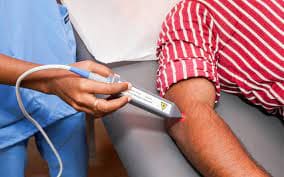
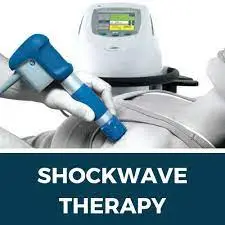
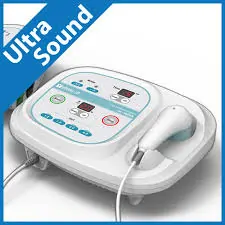
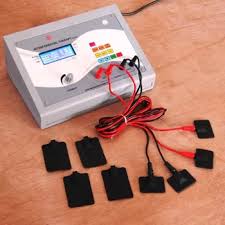
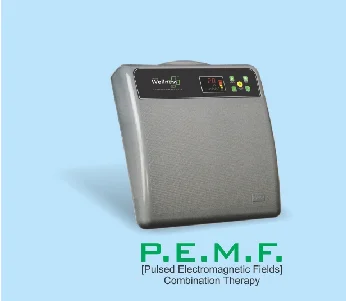
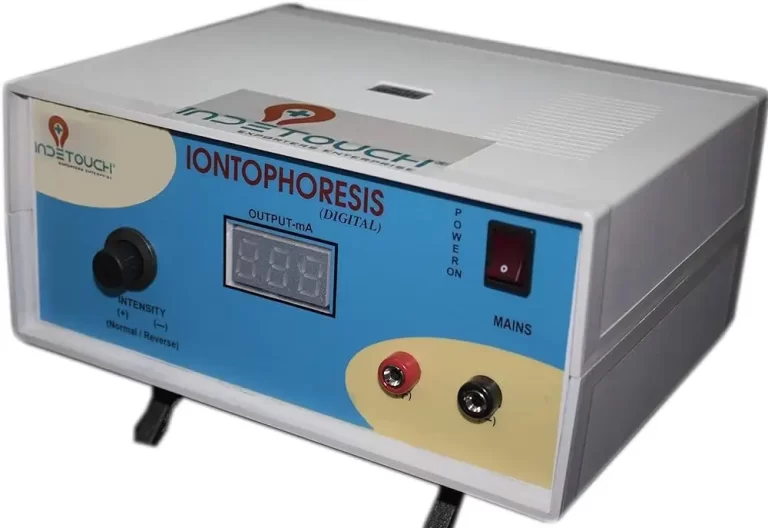
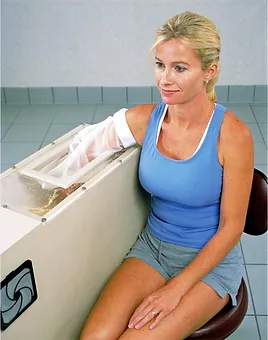
2 Comments